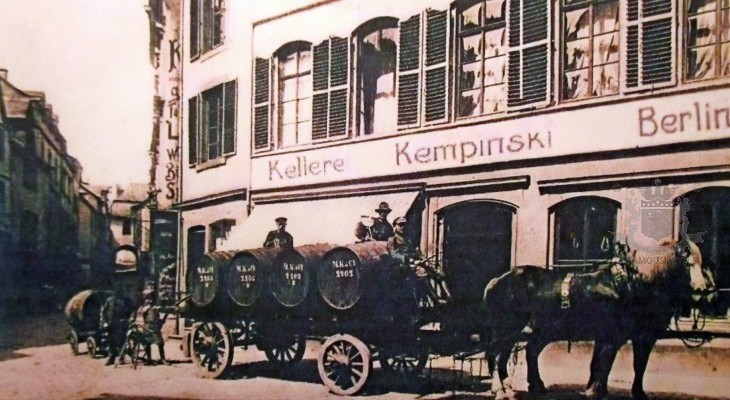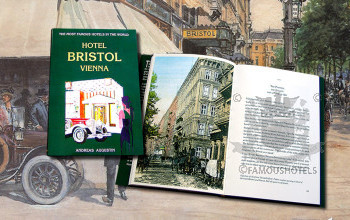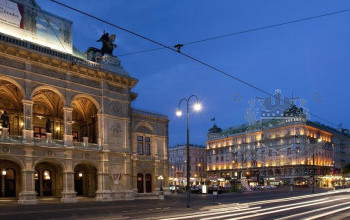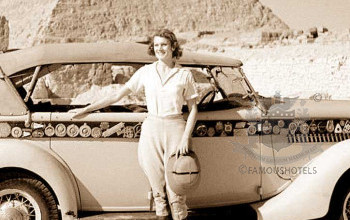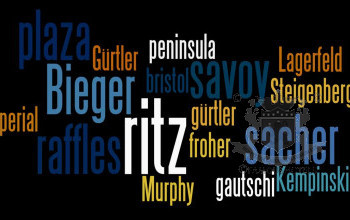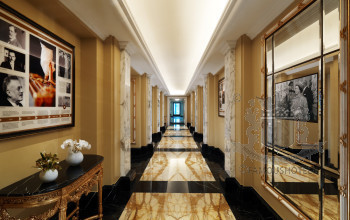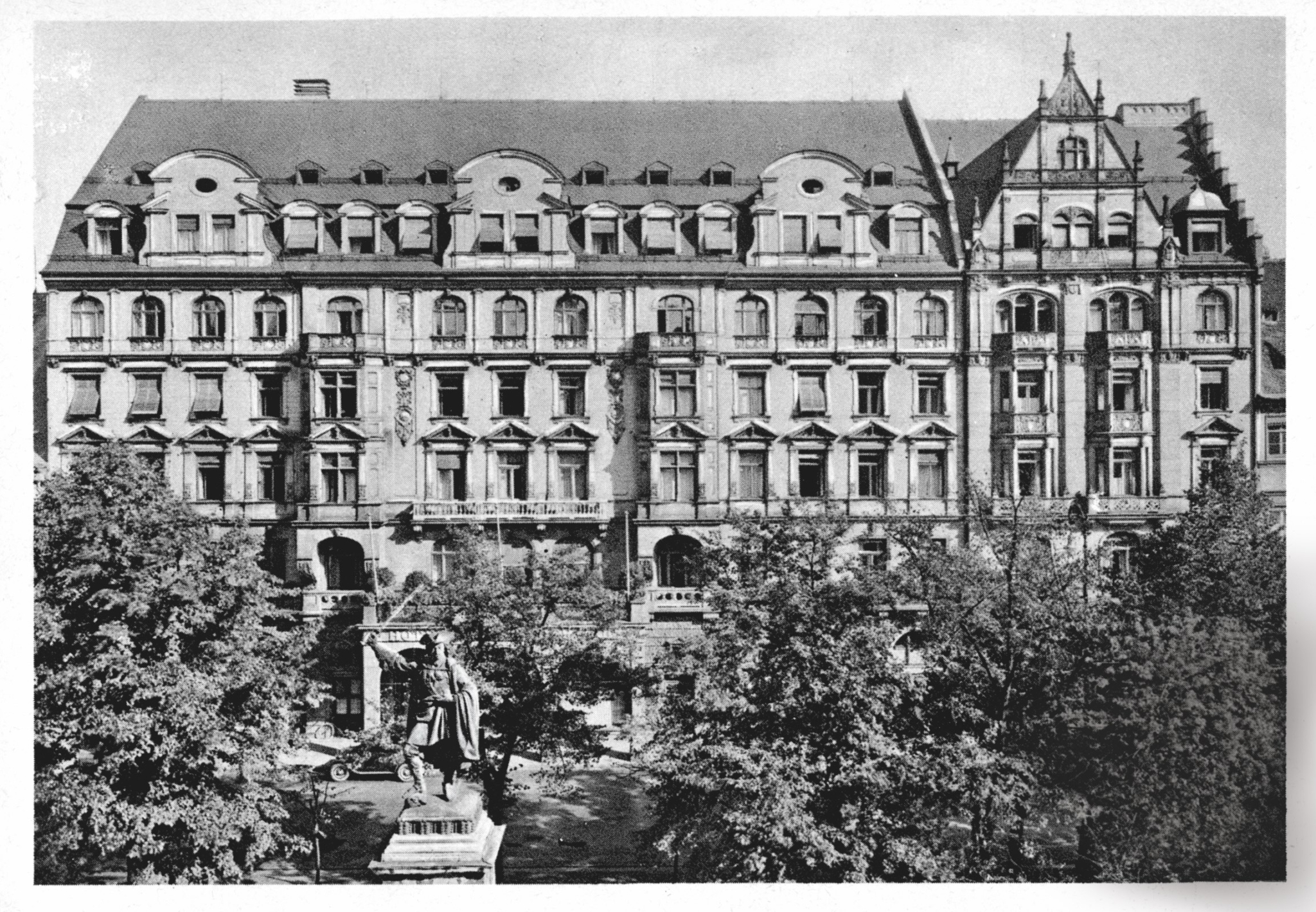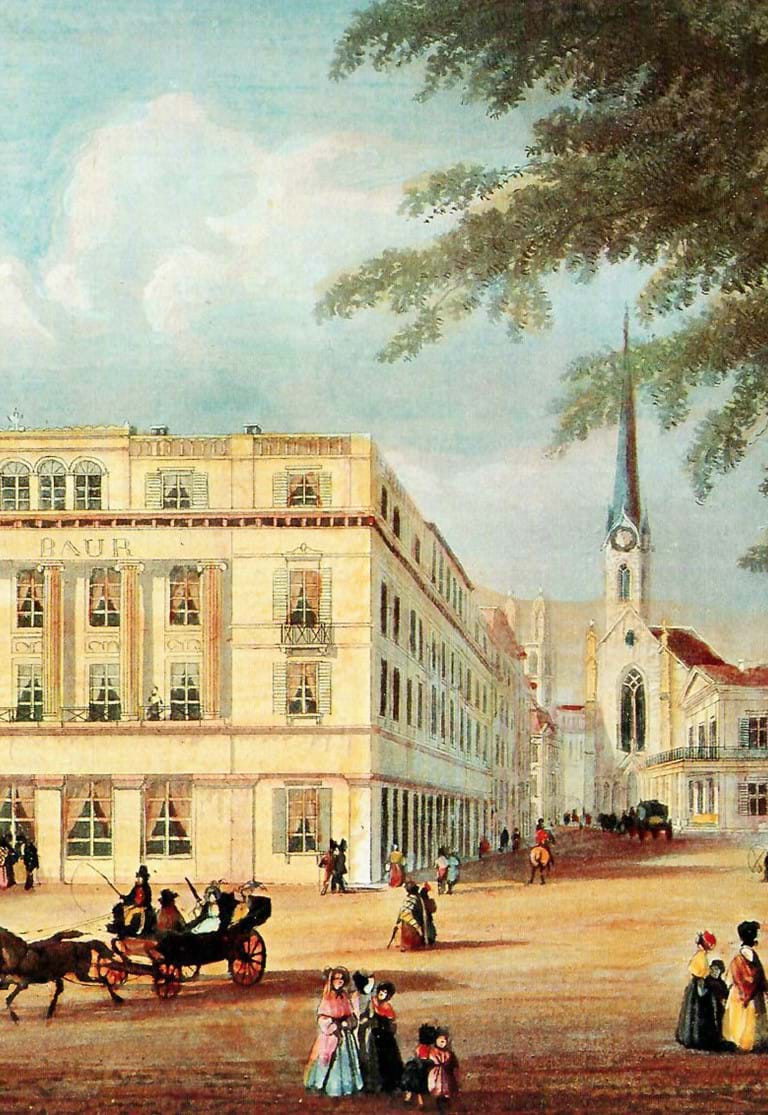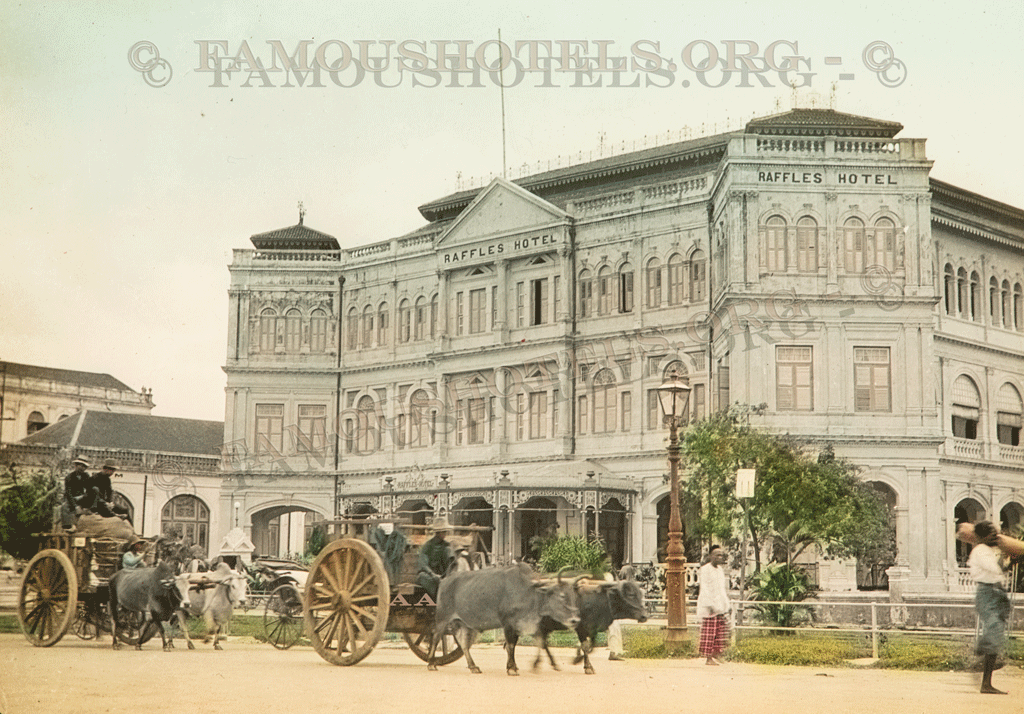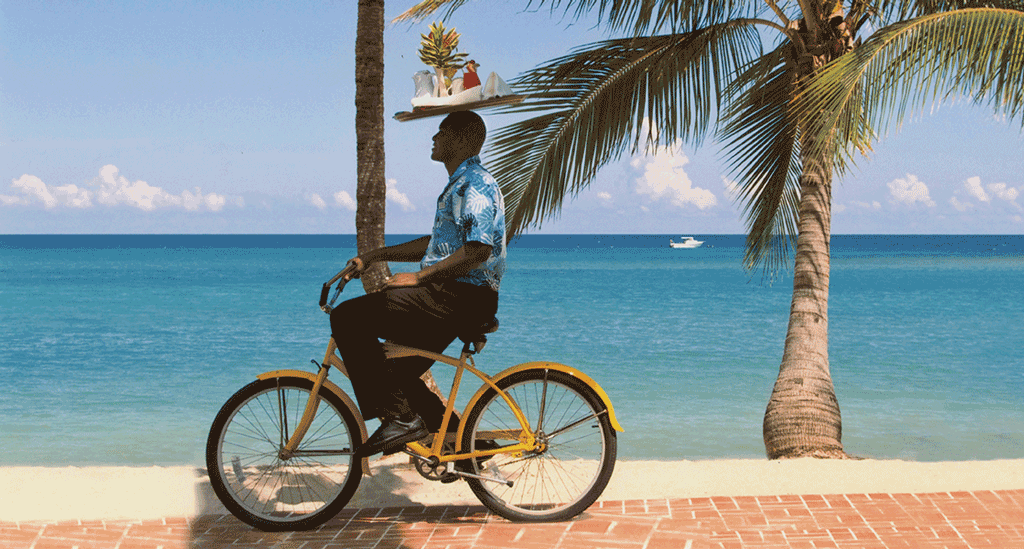Kempinski, Hoteliers since ... when?
( words)
Research in progress / comments welcome
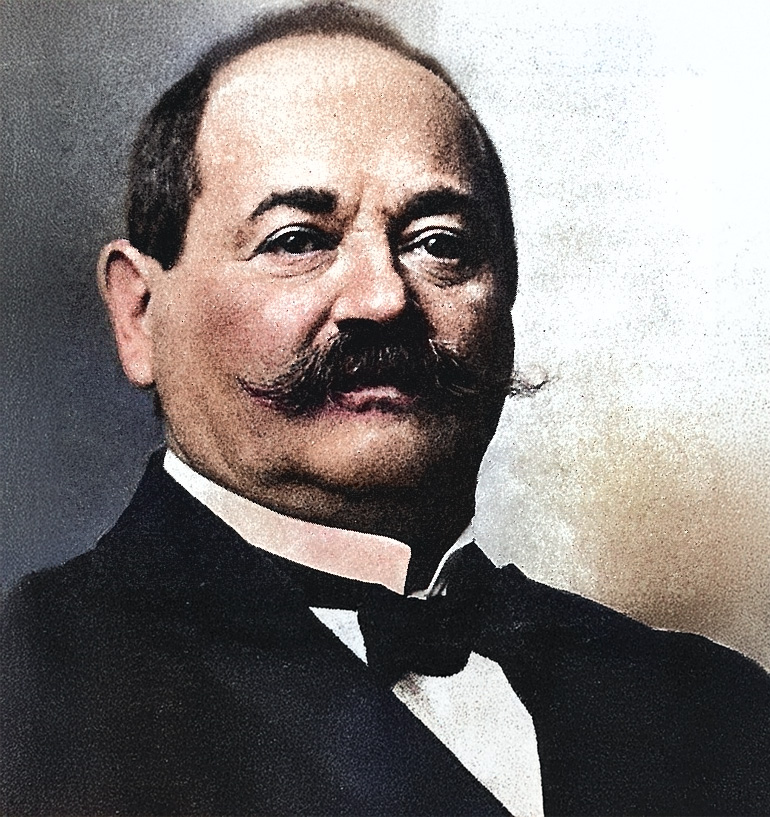 Berthold Kempinski, wine merchant, restaurant owner and entrepreneur, died in 1910, long before his company was “Aryanized” by the Nazis in 1937. In the 1970s, his name was adopted by a Berlin based Hotelbetriebs AG, which has since operated as Kempinski Hotels, managing numerous luxury hotels worldwide. A proof that the Kempinskis are hoteliers since the 19th century is missing.
Berthold Kempinski, wine merchant, restaurant owner and entrepreneur, died in 1910, long before his company was “Aryanized” by the Nazis in 1937. In the 1970s, his name was adopted by a Berlin based Hotelbetriebs AG, which has since operated as Kempinski Hotels, managing numerous luxury hotels worldwide. A proof that the Kempinskis are hoteliers since the 19th century is missing.
Kempinski was a host, not a Hotelier!
At The Most Famous Hotels in the World, we cheer every time a hotel flies its history like a banner. Just make sure it’s not upside down.
The use of the small tagline "Hoteliers since 1897" under the Kempinski logo is causing controversy. What is the famous former flagship of German hospitality doing, and why? In reality, the Kempinskis — owners of various Berlin restaurants — were never hoteliers. After over 50 yeares of successfully operating various restaurants and a wine trade, being Jewish, they were expropriated, persecuted, and murdered by the Nazi regime. Today, the Kempinski hotel group claims to prove that they have been "hoteliers since 1897," but this information lacks any historical basis. Here are the facts:
The Wine Tavern:
The Kempinski era began with a determined Jew named Bertold Kempinski from Breslau (now in western Poland), who set out to conquer the soul of the capital of the German Empire, Berlin. And he had a hunch that this soul lay in the stomach. Around 1870, he opened a wine shop at Friedrichstraße 178, which was officially registered in the commercial register in 1872. The wine tavern, operated with his wife Helen, proved to be a lucrative source of income providing the Kempinskis with capital. The place soon became too small and having achieved a secure level of prosperity they bought real estate at Leipziger Strasse.
The "Weinhaus Kempinski" soon became an institution. But we must not imagine it as a modest tavern—it had a distinct social character, lively and popular in every respect. At the height of the Bertold Kempinski era, the press celebrated:
"7,200 guests and 20,000 oysters daily—caviar for the people—wine cellars—bakery and laundry—hygienic facilities—not a single table empty!"
Despite this success, Kempinski and his wife Helen remained grounded. Alongside roasts and sausages, they served oysters, crabs, caviar, woodcocks, even lapwing eggs—affordable for everyone. It gets even more astonishing: for his scattered wine cellars across Berlin, he paid an annual rent of 30,000 marks. He ran his own bakery and laundry, a facility for silver-plating tableware, and a porcelain painting workshop where plain factory-purchased porcelain was decorated and glasses were adorned with gold rims.
On peak days, the bakery produced up to 17,000 bread rolls, while the laundry processed up to 20,000 freshly washed and ironed napkins. These did not only supply his own restaurant but also many other establishments, which—an innovation at the time—rented table linens. A bottle-washing facility cleaned 10,000 bottles daily, and a dedicated waste incineration plant was installed.
From a social perspective, Kempinski must also be highlighted: he maintained an emergency accident and medical station. The common practice of reusing food scraps was eliminated by the principle that once food left the kitchen, it was not allowed to return. Some kitchen waste was turned into soap, some was used as animal feed, and some was sold to chemical factories, bringing in an additional 20,000 marks annually.
He is said to have once joked: "You will find the president of the Reichstag and deputies from all parties here, just as you will find a young man dipping into his pocket money. But one thing you will never find: an empty table."

Moritz Kempinski (1835-1910); his younger brother, Bertold (1843-1910) and wife Helen Kempinski.
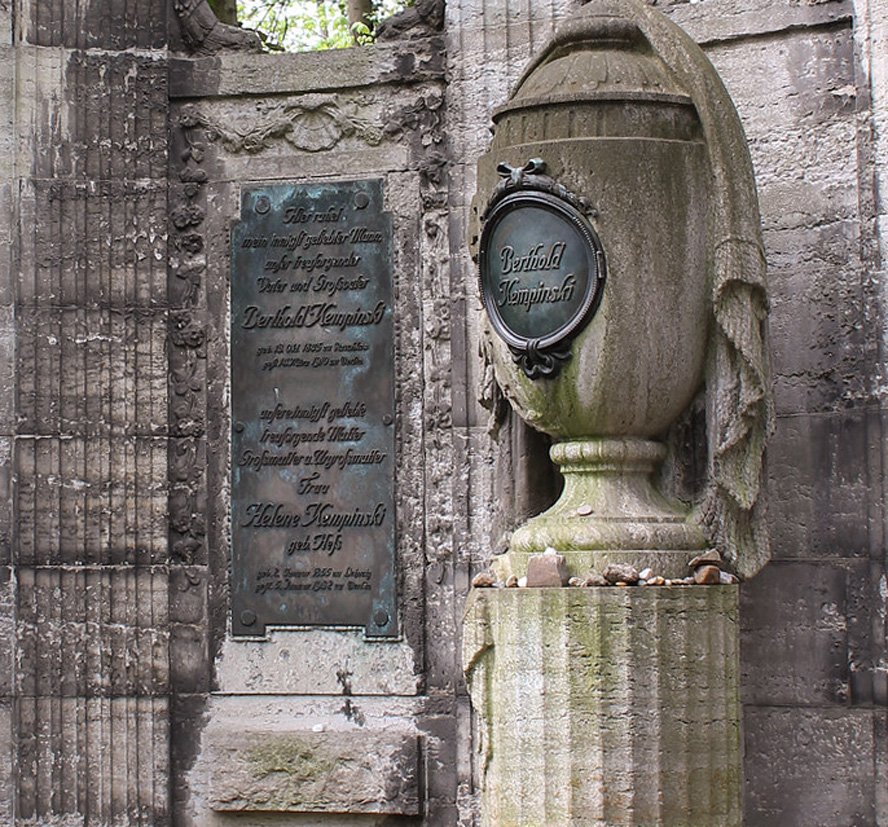
Berthold Kempinski's honorary grave is located in Field T2 at the Jewish Cemetery in Berlin-Weißensee.
The Unger Era:
The Kempinskis had no male heir. For this reason, their son-in-law, Richard Unger, the husband of their daughter Frieda, and a nephew, Hans Kempinski, joined the company. The artistically inclined Hans was a passionate painter, but Unger proved to be a skilled businessman. Bertold Kempinski retired, enjoying his well-earned rest, and passed away in 1910. By the time of the First World War (1914–1918), Unger, who now owned the business, had managed to build a respectable real estate complex around the company. He expanded it into a large-scale gastronomic enterprise.
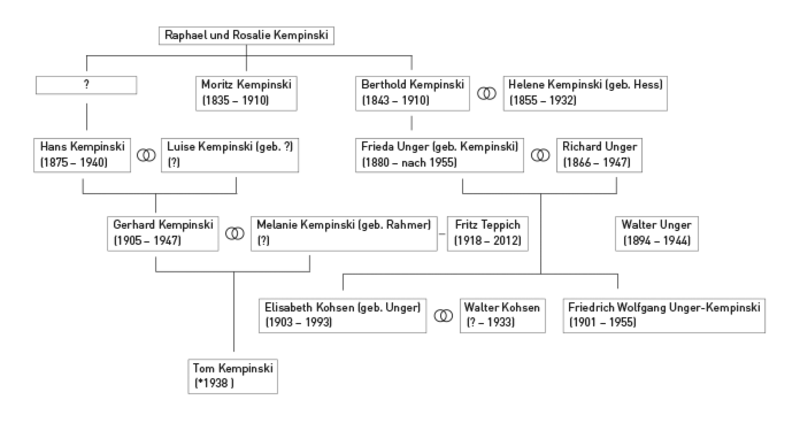
Kempinski family tree
Ku’damm 27
As the area around Kurfürstendamm grew increasingly popular, Unger purchased and operated a restaurant at Ku’damm 27 (Kurfürstendamm 27). In 1928, he took over the management of Haus Vaterland at Potsdamer Platz and introduced a groundbreaking new restaurant concept—an entertainment dining experience unlike anything Berlin had ever seen.
Spread across four floors, exquisite delicacies were served, complemented by artistic performances. Kempinski became renowned far beyond Berlin, much like Sacher for Vienna or Sprüngli for Zurich—his name became a synonym for fine dining. When the Great Depression reached Germany in December 1929, the lavish oyster selection at Kempinski was still praised, offering guests a way to pass the time before the promised Porterhouse steak for five to six people arrived within 30 minutes, as stated on the menu.
However, it is important to note: despite its fame and scale, Kempinski was still only a restaurant—not a hotel! In 1932, Unger made an excursion into the hotel business by operating Schloss Marquardt near Potsdam. In 1932, the family leased and operated Schloss Marquardt as a hotel, but it did not carry the Kempinski name. It was simply a property managed by the family—an early and singular step into hospitality, without branding it as such. It was a brief chapter in an otherwise culinary-focused history. The hotel was not called “Kempinski.” The true rise of Kempinski as a hotel brand came two decades later.
Nazi Regime:
During the Nazi regime and World War 2 (1930s–1945) the jewish Kempinski business under Unger came to an abrupt halt. Richard Unger and his wife emigrated to the United States. Under the pressure of the anti-jewish racial laws, the Kempinski enterprise was in fact stolen by the German Reich, which constituted a typical act of 'aryanization', as these acts of expropriation were called. Walter Unger, son of Richard, had remained in Germany to continue the business. Eventually, he had been forced to transfer the shares of his family's company to a company called Aschinger AG, all this in exchange for his own life. After the deal was executed, Walter Unger was murdered at the concentration camp Auschwitz. Even the jewish name Kempinski was no longer accepted by the regime. The restaurant(s) were renamed F.W. Borchard.
After World War 2:
After 1945 (end of World War 2), Bertold Kempinski's grand son Friedrich W. Unger had been able to restitute the location of Kurfürstendamm 27 from the Aschinger company who had bought it for a ridiculous low sum it in 1937.
Hotel rooms were scarce after the war. Supported by the Marshall Plan, the construction of a hotel was approved. In February 1951, in the presence of Berlin's Governing Mayor, Dr. Walther Schreiber, the foundation stone for a hotel was laid on Kurfürstendamm plot number 27. The hotel opened in 1952. It was to become the first Kempinski.
For the first time, the name Kempinski—previously associated with the successful restaurant chain before World War II—adorned a hotel in a prime location in West Berlin. Unger sold his shares. According to various sources, he failed to share the profits with the other members of the Kempinski family.*)
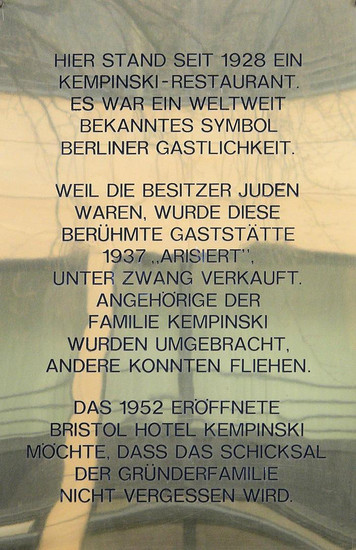
In 1994, after lengthy discussions, a memorial plate was unveilde at the Kempinski Bristol in Berlin. To claim that Kempinski has been hoteliers since 1897 is simply audacious. Let us take to heart what is written on the commemorative plaque at the hotel:
HERE STOOD A KEMPINSKI RESTAURANT SINCE 1928.
IT WAS A WORLD-RENOWNED SYMBOL OF BERLIN HOSPITALITY.
BECAUSE ITS OWNERS WERE JEWISH, THIS FAMOUS ESTABLISHMENT WAS "ARIANIZED" IN 1937 AND FORCIBLY SOLD.
MEMBERS OF THE KEMPINSKI FAMILY WERE MURDERED, WHILE OTHERS MANAGED TO ESCAPE.
THE BRISTOL HOTEL KEMPINSKI, OPENED IN 1952, WISHES TO ENSURE THAT THE FATE OF THE FOUNDING FAMILY IS NOT FORGOTTEN.
Hoteliers since 1897 ...?
In 2010, Kempinski, under its president Reto Wittwer, added the line "Hoteliers since 1897" to the company's name. For the first time ever the date 1897 had been circulated. It looked like an attempt to create a legend.
It takes just a small trick to come up with a much better and historically approved tagline
In the Munich commercial register Kempinski Aktiengesellschaft (it is no longer listed in Berlin) is registered with its headquarters, branch, and domestic business address at Maximilianstr. 17, 80539 Munich (Hotel Vier Jahreszeiten Kempinski Munich). The date of the first statutes is recorded as April 5, 1897, which at best creates the illusion of historical continuity.**
In reality, a "hotel operating company" in Berlin adopted the Kempinski name in the 1970s. This is still far from "Kempinski – Hoteliers since 1897." Out of respect for history-conscious consumers, it would be only fair to clarify this misleading claim.
Why doesn’t Kempinski use "Hospitable" — or "At Your Service since 1872" instead? With a bit of imagination and verifiable facts, they could rightfully make that claim, referencing their origins in the wine trade.
* There is information available on the web concerning the dubious 1950s-deals, involving the former aryanization-company Aschinger AG, which continued to be involved via sub-companies even in modern Germany. Names featured among others are Paul Spethmann and Werner Steinke (sources: Fritz Teppich and others), who were former Nazis, still acting in the same positions after the war.
For example: //hagalil.com/archiv/98/08/kempinski.htm
Book about the saga of the Kempinski family: //berlinerliteraturkritik.de/detailseite/artikel/die-familiensaga-der-hoteldynastie-kempinski.html?type=1&cHash=eabf4ee4fba3ae5aeb8a5e126d102547
** Kempinski’s grand son Friedrich W. Unger merged his share of the business with a Hotel Corporation called Bristol and Kaiserhof. Thus the company acquired the name Bristol. The Bristol was a hotel located Unter den Linden, in a different part of the city. It had opened for business in 1890. A 'Hotelbetriebs-Aktiengesellschaft', registered in 1897, had acquired it in 1904. Before 1952, that hotel Bristol had nothing in common with the Kempinski Bristol Berlin.

